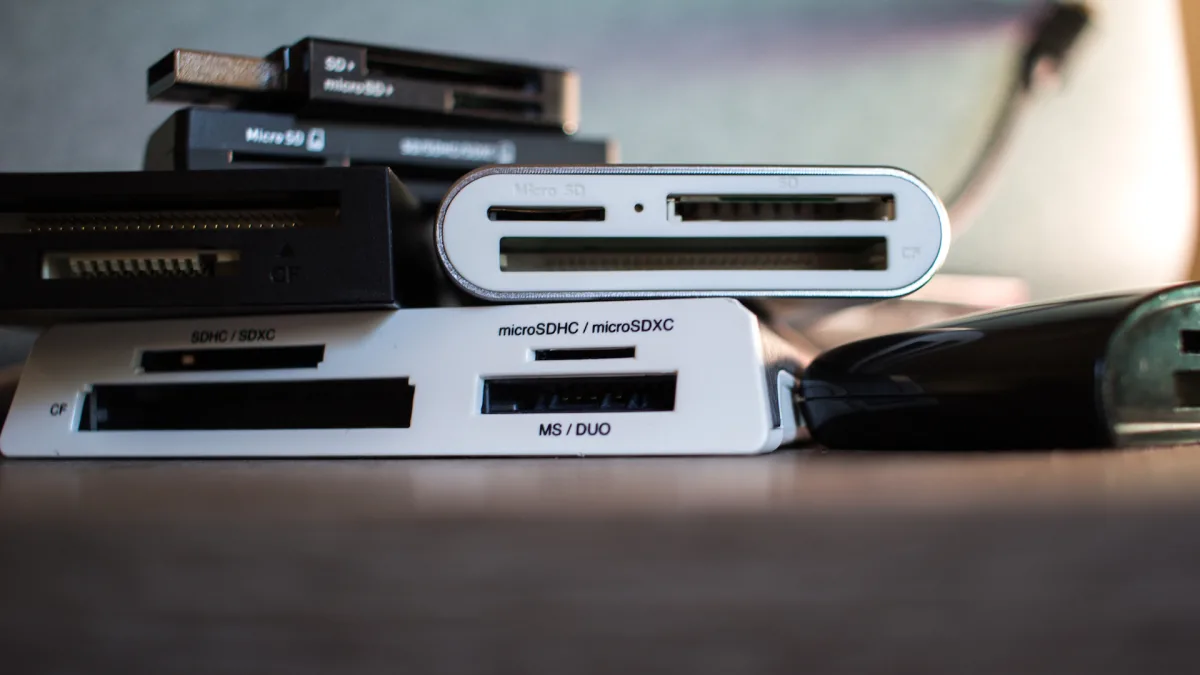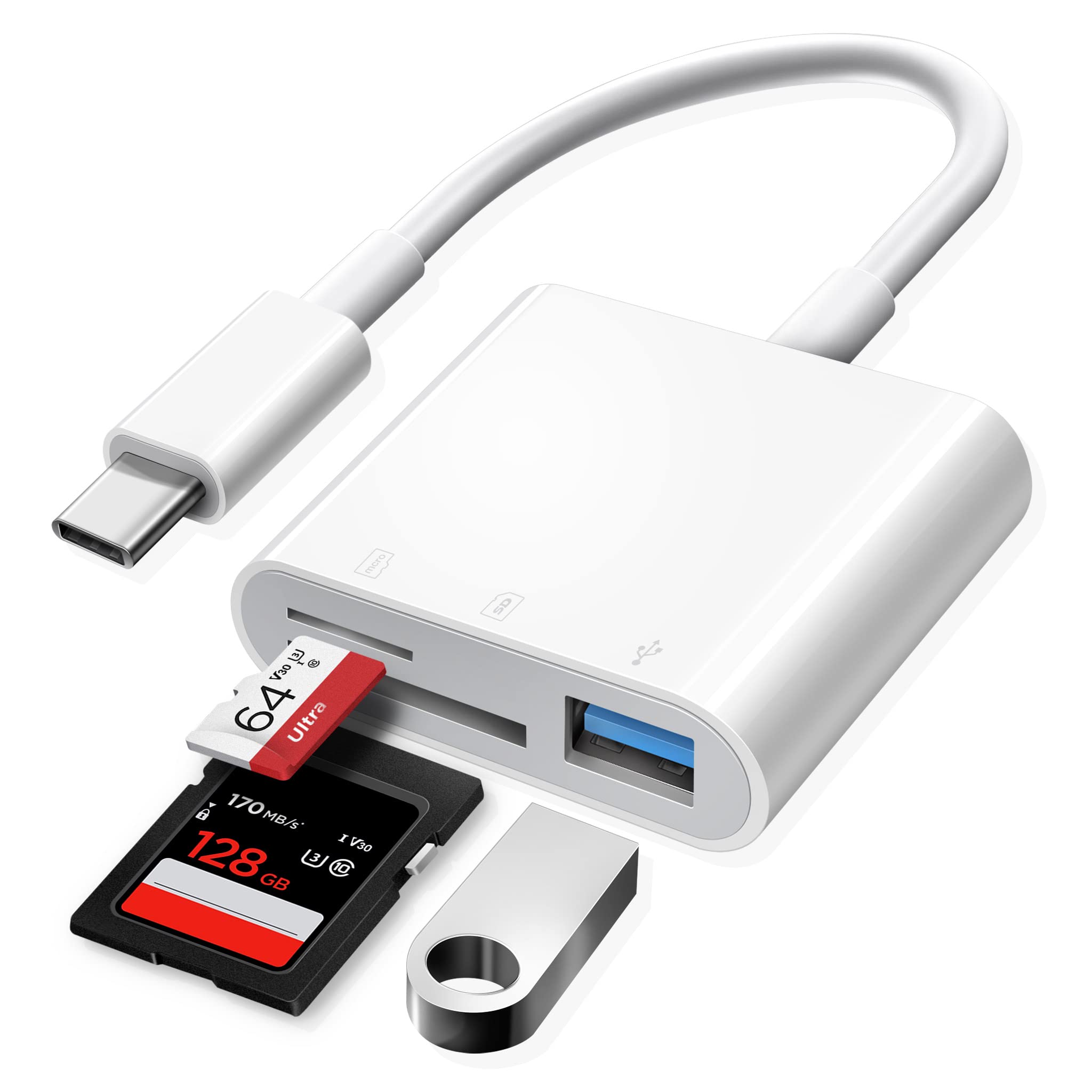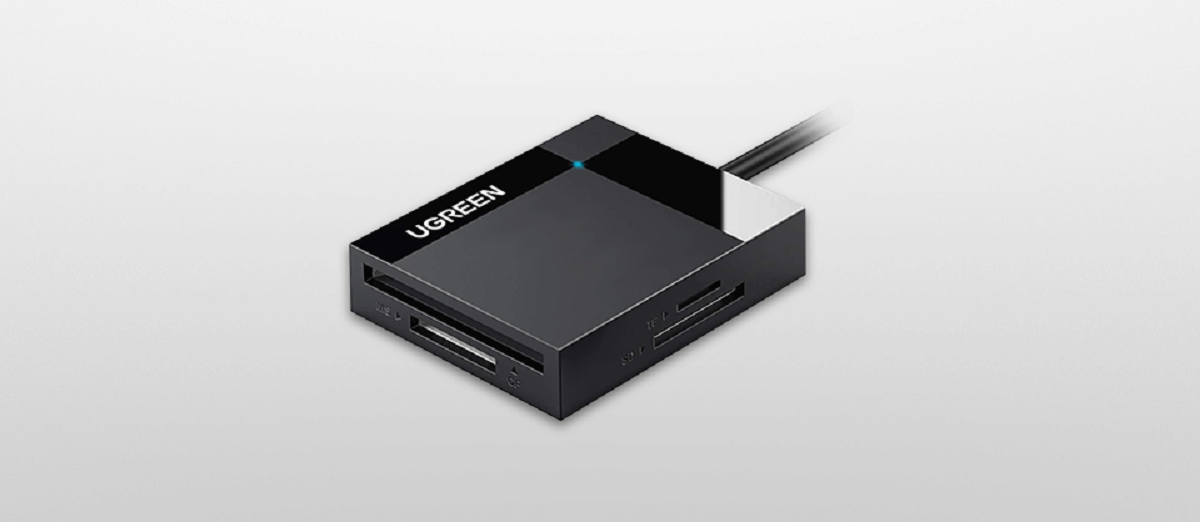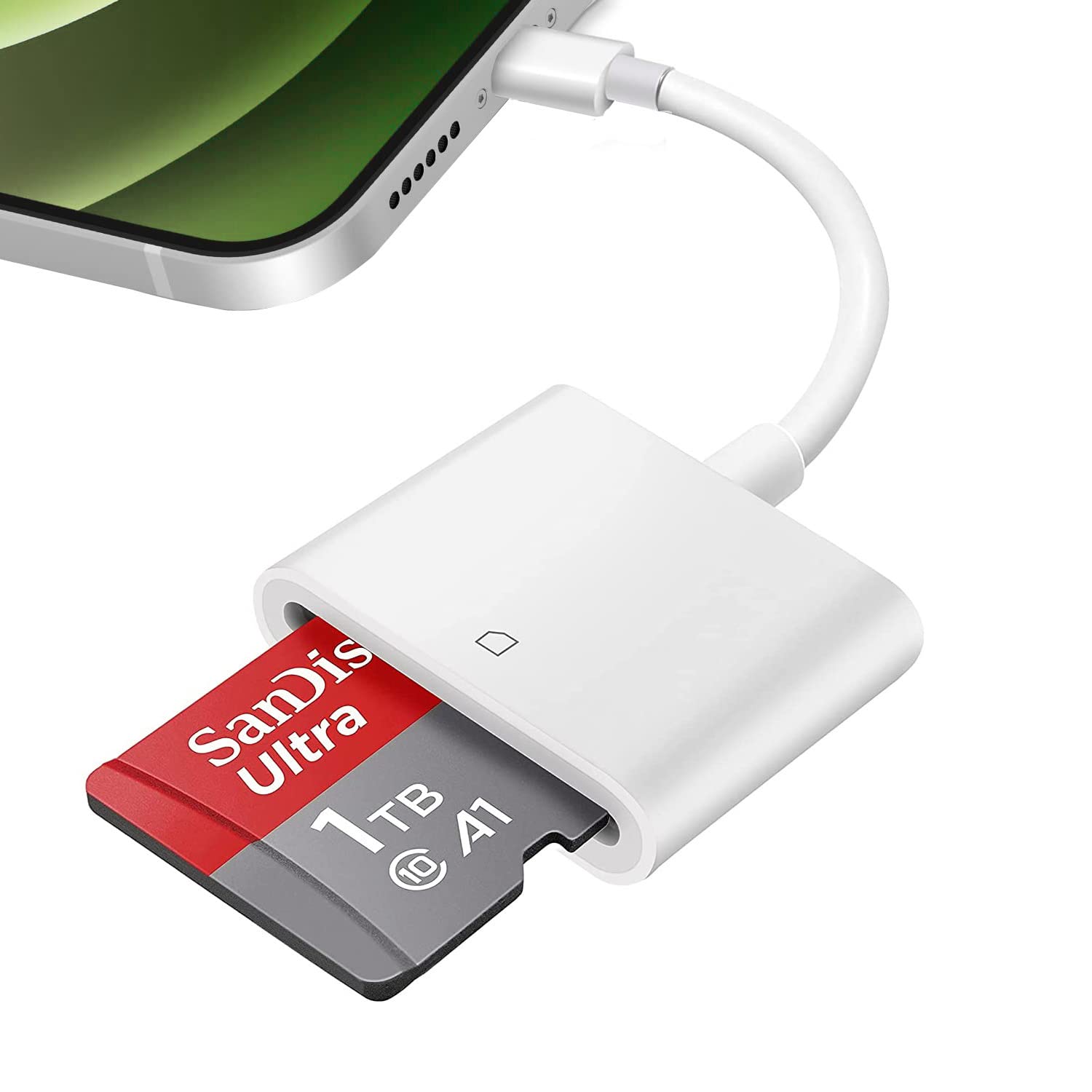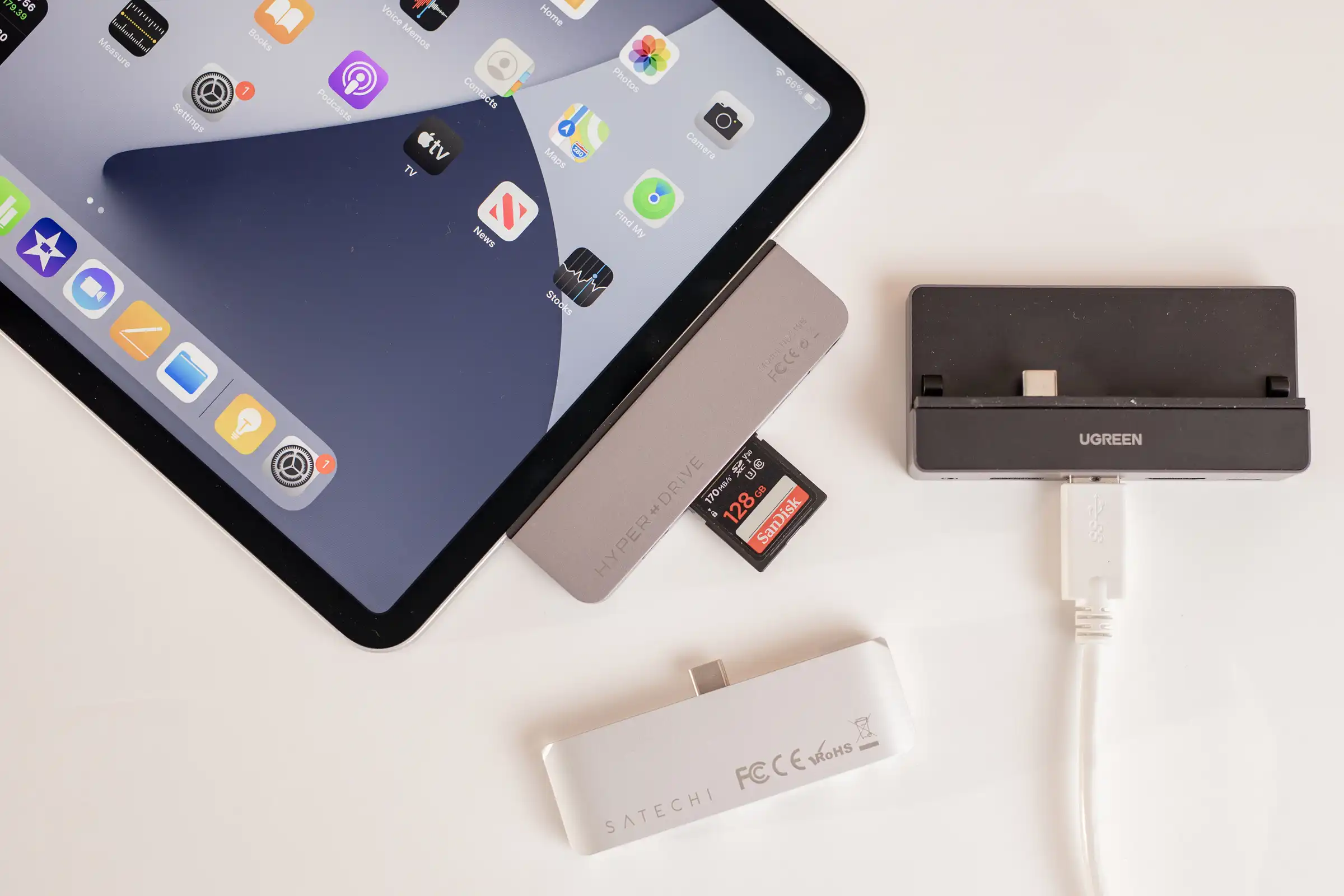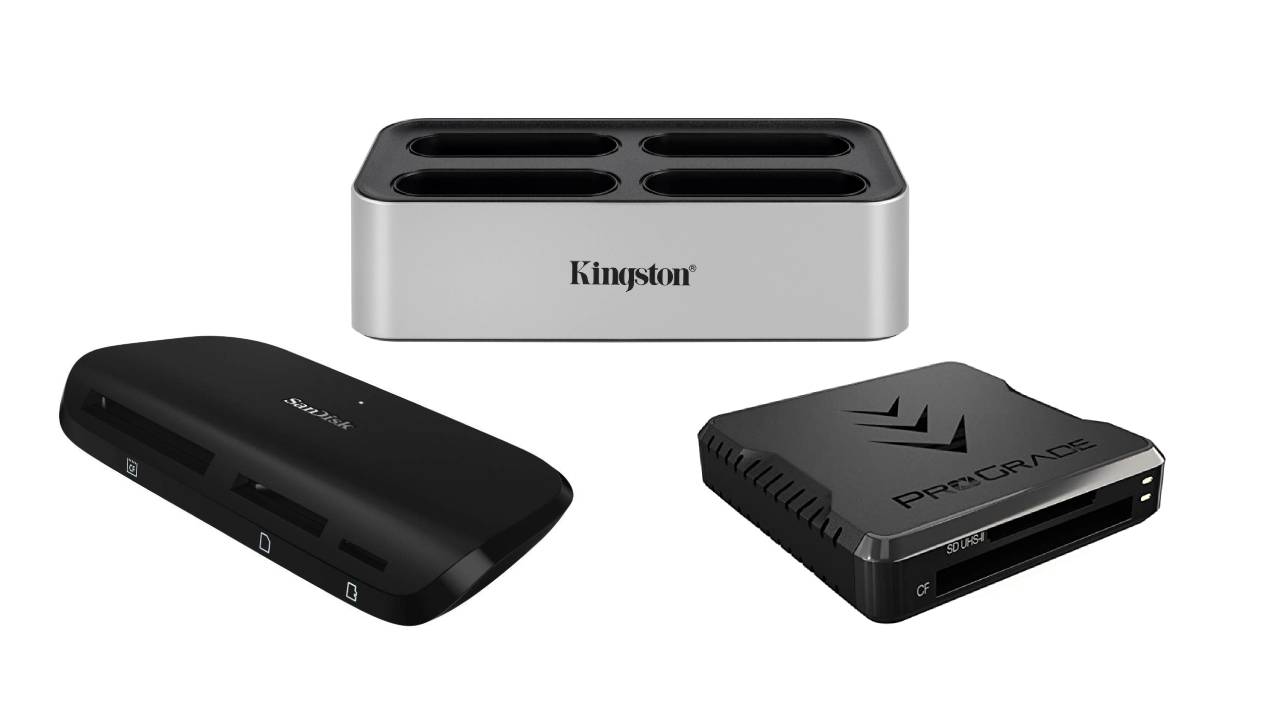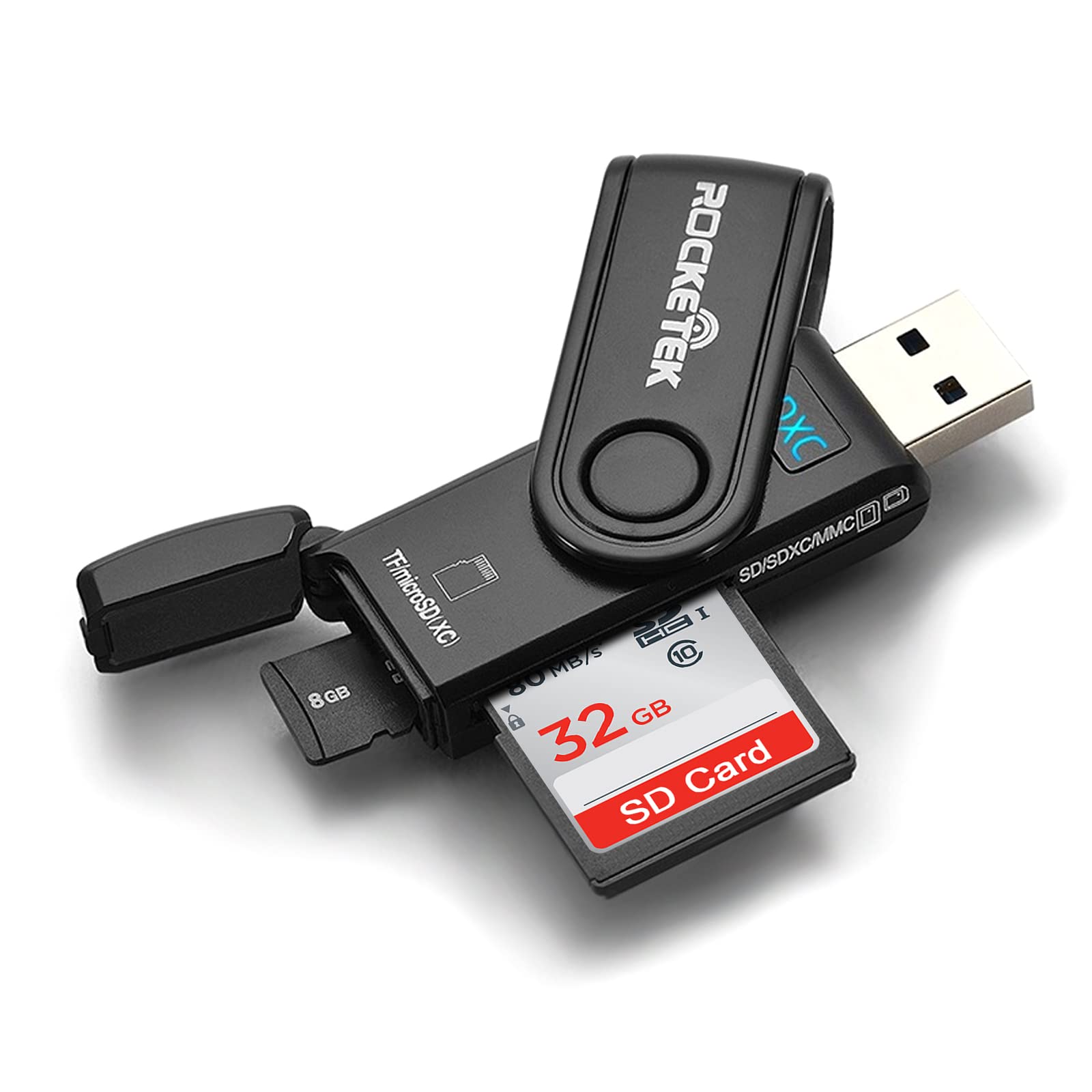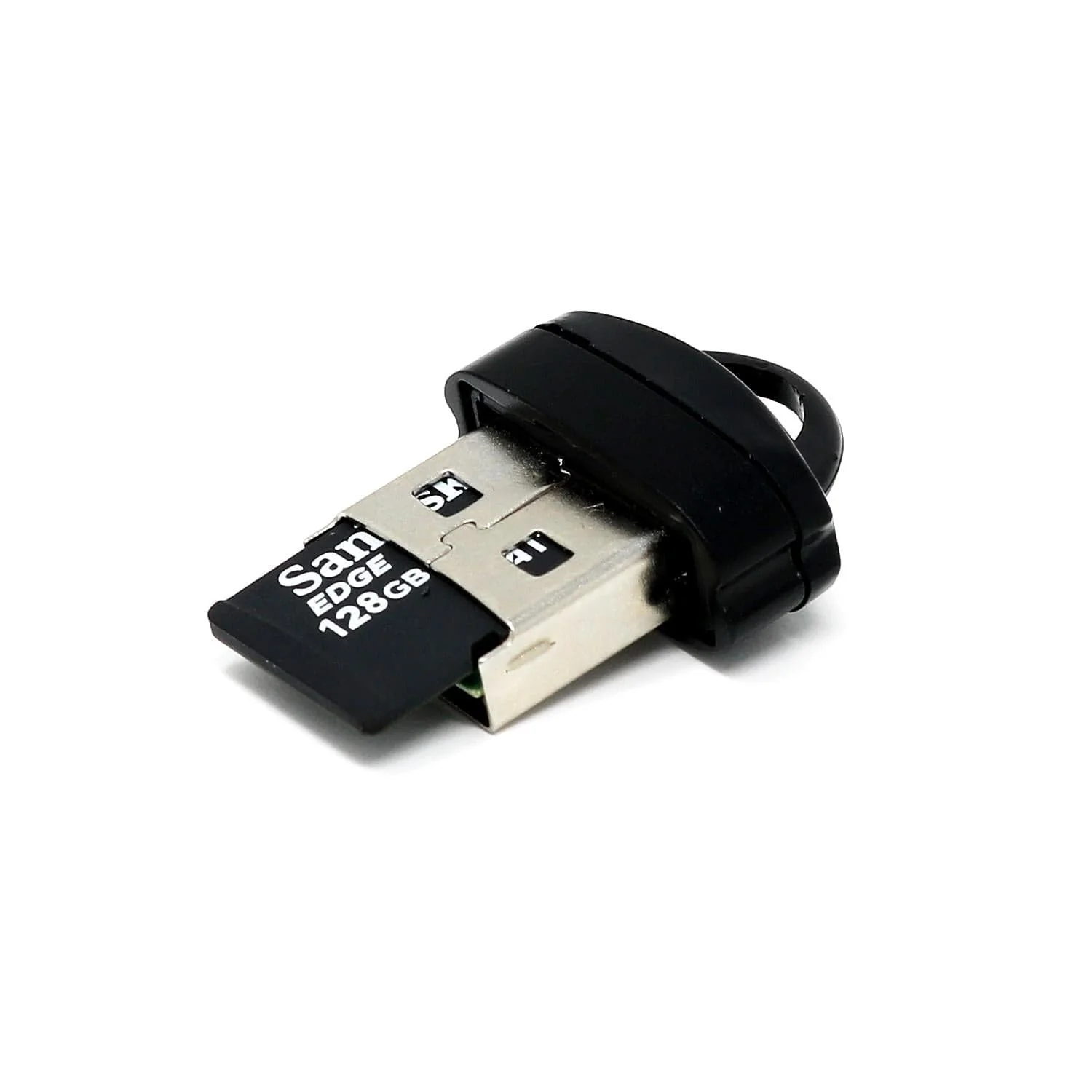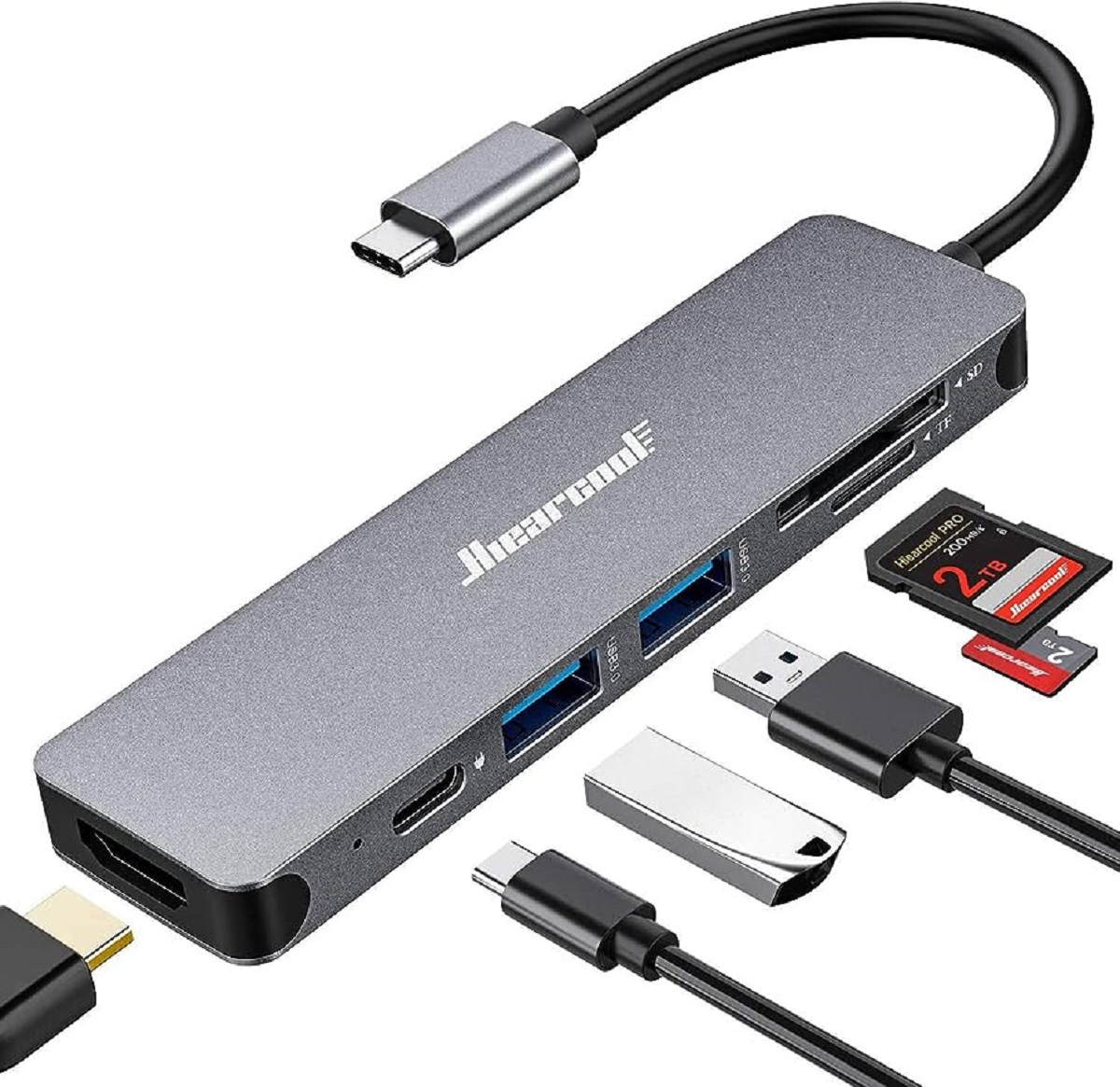What Does An SD Card Reader Do?
An SD card reader is a device that allows you to access the content stored on an SD (Secure Digital) card. It serves as a bridge between your SD card and your computer or other devices. This compact and portable device has become an essential tool for many individuals who use SD cards with their digital cameras, smartphones, tablets, and other electronic devices.
So, what exactly does an SD card reader do? The primary function of an SD card reader is to read and transfer data from an SD card to a computer or another compatible device. It allows you to quickly and easily transfer photos, videos, music, documents, and other files from your SD card to your computer. Similarly, it enables you to write data onto the SD card, such as transferring files from your computer to the SD card.
SD card readers come in various forms, including external card readers that connect to your computer through USB ports and built-in card readers found in laptops, cameras, and other devices. These readers are typically compatible with different types of SD cards, including SDHC (Secure Digital High Capacity) and SDXC (Secure Digital Extended Capacity) cards. Some card readers also support other memory card formats, such as MicroSD and CompactFlash.
While the primary purpose of an SD card reader is data transfer, it can also serve other functions. Some card readers include additional features like card formatting, data backup, and software installation capabilities. These additional features offer convenience and versatility, making an SD card reader a useful tool for both personal and professional use.
Moreover, an SD card reader can be used to expand the storage capacity of devices that have limited internal storage. By using an SD card reader, you can easily transfer files to and from the SD card, freeing up space on your device. This is particularly beneficial for individuals who frequently capture high-resolution photos and videos or store large amounts of data.
In summary, an SD card reader is a device that enables the seamless transfer of data between an SD card and a computer or other compatible devices. It provides a convenient way to access, transfer, and manage data stored on SD cards. Whether you need to transfer photos, videos, music, or documents, an SD card reader is a versatile tool that simplifies the process and enhances your overall digital experience.
Introduction
An SD card reader is a small yet powerful device that has become an integral part of our digital lives. With the increasing use of SD cards in various electronic devices, having a reliable SD card reader has become essential. This device allows us to conveniently access and transfer data stored on our SD cards, making it easier to manage our files and memories.
SD card readers come in different shapes and sizes, from external USB card readers to built-in readers found in laptops, cameras, and other devices. They are designed to provide a seamless connection between your SD card and your computer or other compatible devices.
The purpose of this article is to help you understand the importance and functionality of an SD card reader. We will discuss what an SD card reader does, how it works, the different types available, and the benefits of using one. Whether you are a professional photographer looking to transfer high-resolution images or an everyday user wanting to back up important files, an SD card reader can greatly enhance your digital experience.
Throughout this article, we will explore the various uses of an SD card reader and explain how to choose the right one for your needs. By the end, you will have a comprehensive understanding of the role an SD card reader plays in simplifying data transfer and managing your digital content.
So, if you have ever wondered what an SD card reader does or how it can benefit you, keep reading to discover the wonders of this small device that holds significant importance in our tech-centric world.
What is an SD Card Reader?
An SD card reader is a device that allows you to access the contents of an SD (Secure Digital) card and transfer data to and from it. It is essentially a hardware interface that acts as a bridge between your computer or other devices and the SD card. This enables you to quickly and easily transfer photos, videos, music, documents, and other files stored on your SD card.
SD card readers come in various forms, including external card readers that connect to your computer through USB ports, as well as built-in card readers found in laptops, cameras, and other electronic devices. They are specifically designed to be compatible with different types of SD cards, such as SDHC (Secure Digital High Capacity) and SDXC (Secure Digital Extended Capacity) cards.
The main function of an SD card reader is to read the data stored on the SD card and facilitate its transfer to and from your computer or other devices. By inserting the SD card into the reader, you can view and manage the files stored on the card directly on your computer. This eliminates the need for complicated cables or software installations, making it a convenient and efficient way to access your data.
SD card readers are not limited to transferring data. Many models offer additional features and functionalities to enhance the user experience. For example, some card readers support card formatting, allowing you to erase the data on the SD card and prepare it for new usage. Others may have backup capabilities, enabling you to create backups of important files and protect them from accidental loss. Some card readers are even equipped with software installation features, making it easy to install drivers or applications onto your SD card.
One of the significant advantages of using an SD card reader is its compatibility with various devices. You can use it with computers, laptops, smartphones, tablets, digital cameras, gaming consoles, and more. This versatility allows you to access and transfer data between different devices seamlessly.
In summary, an SD card reader is a versatile device that serves as a gateway to your data stored on an SD card. It allows you to easily transfer, manage, and back up files from your card to your computer or other compatible devices. Whether you are a professional photographer, a student, or simply someone who wants to organize your data, an SD card reader is a valuable tool that simplifies the process and gives you control over your digital content.
How Does an SD Card Reader Work?
Understanding how an SD card reader works can help you appreciate its functionality and efficiency in transferring data. The operation of an SD card reader involves several key components that work together to facilitate the seamless transfer of information between your SD card and your computer or other devices.
When you insert an SD card into a card reader, the reader establishes a physical connection with the card through its built-in card slot or USB interface. This connection ensures that the data pins on the card and those in the reader are properly aligned, allowing for reliable data transfer.
The internal circuitry within the SD card reader plays a crucial role in the communication process. It consists of a controller chip that manages the transfer of data between the SD card and the computer. The controller chip is responsible for interpreting the commands and instructions from the computer and executing them on the SD card.
Once the connection is established, the SD card reader relies on the Universal Serial Bus (USB) or other data transfer protocols to communicate with the computer. This allows the reader to transfer data at high speeds. The USB interface also provides power to the SD card, eliminating the need for an external power source.
The SD card reader uses the File Transfer Protocol (FTP) or the Mass Storage Device (MSD) class protocol to exchange data between the card and the computer. These protocols ensure the compatibility and seamless transfer of files. The reader enables you to access the contents of the SD card as if it were a removable storage device connected directly to your computer.
Additionally, the SD card reader supports various file systems, such as FAT32 and exFAT, which are commonly used on SD cards. These file systems determine how data is organized and stored on the SD card. The reader understands these file systems and allows you to navigate and manage files seamlessly.
It is worth noting that the SD card reader is designed to be backward compatible with older versions of SD cards. This means that you can use an SD card reader that supports newer SD card formats, such as SDXC, with older SD cards, such as SDHC or SD. This flexibility ensures that you can use a wide range of SD cards with your reader, regardless of their capacities or generations.
In summary, an SD card reader works by establishing a physical connection between your SD card and the reader, utilizing the USB interface for data transfer, and relying on compatible protocols and file systems to facilitate seamless communication. Its internal circuitry and controller chip play a crucial role in managing the transfer of data between the card and your computer. Understanding these mechanisms helps you appreciate the efficiency and convenience of an SD card reader in accessing and transferring your valuable digital content.
Types of SD Card Readers
SD card readers come in various types and forms, designed to cater to different needs and preferences. Understanding the different types of SD card readers can help you choose the one that best suits your requirements. Here are some common types of SD card readers:
- External USB Card Readers: These are standalone card readers that connect to your computer or device through USB ports. They are highly versatile and compatible with a wide range of devices that have USB connectivity. External USB card readers are portable and convenient for on-the-go use. They often support multiple card formats, including different types of SD cards, MicroSD cards, and more.
- Built-in Card Readers: Many laptops, cameras, and other electronic devices come with built-in card readers. These readers are integrated into the device itself, allowing you to directly insert an SD card without the need for an external reader. Built-in card readers offer convenience and eliminate the need for additional devices or cables. They are typically specific to the device they are built into and may support a variety of card formats.
- Multi-Card Readers: Multi-card readers are designed to support multiple types of memory cards, including SD cards, MicroSD cards, CompactFlash cards, and more. These readers feature multiple card slots, allowing you to insert and access different card formats in a single device. Multi-card readers are ideal for individuals who work with different memory card formats frequently.
- Wireless Card Readers: Wireless card readers offer a convenient and cable-free way to transfer data between your SD card and your computer or other devices. These readers create their own Wi-Fi network, allowing you to connect wirelessly and access the content on your SD card. Wireless card readers are especially useful when you want to transfer files without physical connections or when using devices that lack built-in card readers.
- Compact Card Readers: Compact card readers are small, pocket-sized devices that are highly portable and lightweight. They are designed for individuals who are constantly on the move and need a compact solution for accessing their SD cards. Compact card readers often connect via USB and are compatible with various devices, including laptops, tablets, and smartphones. They provide a convenient way to transfer data while maintaining a minimalistic and portable setup.
When choosing an SD card reader, consider your specific needs, the devices you plan to use it with, and the card formats you work with. Also, take into account factors like the transfer speed, durability, and additional features offered by the reader. By understanding the different types of SD card readers available, you can make an informed decision and find the right reader that best suits your requirements.
Benefits of Using an SD Card Reader
Using an SD card reader offers numerous benefits for individuals who frequently work with SD cards or need to transfer data between devices. Here are some key advantages of using an SD card reader:
- Efficient Data Transfer: An SD card reader allows for fast and efficient data transfer between your SD card and your computer or other devices. This saves time and ensures that you can access and manage your data quickly and seamlessly.
- Compatibility: SD card readers are designed to be compatible with various devices and operating systems. This means you can use them with computers, laptops, smartphones, tablets, cameras, and more. They also support different types of SD cards and memory card formats, ensuring versatility in your data management.
- Expandable Storage: By using an SD card reader, you can expand the storage capacity of devices with limited internal storage. This is especially useful for smartphones and tablets that may have limited space. You can easily transfer files to and from the SD card, freeing up space on your device and ensuring you never run out of storage.
- Data Backup: SD card readers often come with backup features that allow you to create backups of important files. This ensures that your data is protected in case of accidental loss, damage, or device failure. Having a backup of your files gives you peace of mind and safeguards your valuable digital content.
- Easy File Management: Using an SD card reader simplifies file management tasks. You can conveniently organize, rename, delete, and transfer files and folders between your SD card and your computer. This makes it easier to keep your digital content organized and accessible.
- Convenience and Portability: SD card readers are typically compact and portable, making them easy to carry around. Whether you choose an external USB card reader or a compact reader, you can take it with you wherever you go. This allows you to access and transfer your data on the go, without the need for bulky cables or additional devices.
- Multi-Device Compatibility: SD card readers can be used with multiple devices, making them versatile tools for data transfer. You can use them with different devices for different purposes. For example, you might use an SD card reader to transfer photos from your camera to your computer or to transfer music from your computer to your smartphone.
In summary, using an SD card reader offers several benefits, including efficient data transfer, compatibility with various devices and systems, expandable storage, data backup capabilities, easy file management, convenience, and multi-device compatibility. Whether you are a photographer, a student, a professional, or an everyday user, an SD card reader can greatly enhance your digital workflow and provide you with a seamless and efficient way to manage and transfer your data.
Common Uses of an SD Card Reader
An SD card reader is a versatile tool that finds numerous applications in various settings. Here are some common uses of an SD card reader:
- Transferring Photos and Videos: One of the most common uses of an SD card reader is to transfer photos and videos from a digital camera or camcorder to a computer. This allows photographers and videographers to conveniently access and edit their media files on a larger screen.
- Backup and Storage: An SD card reader is an excellent tool for creating backups of important files and storing them on an external storage medium. By backing up your data onto an SD card, you can protect it from loss or damage and ensure that you always have a copy of your crucial files.
- File Sharing: SD card readers are perfect for sharing files between devices. You can use an SD card to transfer documents, music, videos, and other files from one device to another quickly and easily, without the need for an internet connection or complex file transfer methods.
- Upgrading Device Storage: Many smartphones, tablets, and laptops have limited internal storage. With an SD card reader, you can expand the storage capacity of your devices by inserting a compatible SD card. This enables you to store more apps, music, photos, and videos without worrying about running out of space.
- Managing Music Collections: Music enthusiasts can utilize an SD card reader to transfer music files from their computers to a MicroSD card. This allows them to easily update and manage their music collections on devices like MP3 players or smartphones that support expandable storage.
- Installation of Firmware and Software: Some devices require firmware updates or software installations via an SD card. An SD card reader enables you to transfer the necessary files onto the card, making it easy to update the firmware of devices like digital cameras, gaming consoles, and media players.
- Migrating Data to a New Device: When upgrading to a new device, such as a smartphone or tablet, an SD card reader is invaluable for transferring data from the old device to the new one. You can move photos, videos, contacts, and other files from the SD card to your new device without the hassle of data transfer cables or complicated software.
- Accessing Files on Different Devices: SD card readers enable you to access files stored on an SD card across multiple devices. This means you can view documents, videos, or photos on your computer, transfer them to your tablet for mobility, or even play them on a smart TV that supports SD card input.
In summary, an SD card reader has a wide range of common uses, including transferring photos and videos, creating backups, file sharing, upgrading device storage, managing music collections, installing firmware and software, migrating data, and accessing files across different devices. These versatile applications make an SD card reader a valuable tool for individuals who work with digital media or need a convenient way to manage and transfer data.
How to Choose the Right SD Card Reader
Choosing the right SD card reader is essential to ensure seamless data transfer and compatibility with your devices. Here are some factors to consider when selecting an SD card reader:
- Device Compatibility: Ensure that the SD card reader is compatible with the devices you plan to use it with. Check the reader’s specifications to verify if it supports the operating system and device type you intend to connect it to.
- Type of SD Card: Consider the type of SD card you use most frequently. Make sure the reader supports the specific SD card format, such as SDHC or SDXC, as well as other memory card formats like MicroSD or CompactFlash if they are relevant to your needs.
- Transfer Speed: Look for an SD card reader that offers high transfer speeds, especially if you frequently work with large files. Faster transfer speeds ensure quicker data transfer, saving you time and improving your workflow.
- Additional Features: Determine if you require any additional features in an SD card reader. Some readers offer features like card formatting, backup capabilities, software installation, or even multiple card slots. Assess your needs and choose a reader that provides the functionalities you find most valuable.
- Portability: Consider the portability of the SD card reader if you intend to use it on the go. Look for lightweight and compact models that are easy to carry and compatible with your mobile devices.
- Reliability and Durability: Ensure the SD card reader is well-built and durable. Read customer reviews or check for product ratings to get an idea of the reader’s reliability and longevity.
- Price: Set a budget range and compare prices of different SD card readers. Remember to consider the features, quality, and compatibility offered within your budget. While it’s important to find a reader at a reasonable price, prioritize quality and compatibility over price alone.
- Brand Reputation: Research the reputation and reliability of the brand manufacturing the SD card reader. A reputable brand is more likely to provide a reliable and high-quality product.
- Warranty: Check if the SD card reader comes with a warranty. A warranty can provide you with peace of mind and protect your investment in case of any manufacturing defects or malfunctions.
By considering these factors, you can choose an SD card reader that meets your specific requirements and ensures a seamless and efficient data transfer experience.
Conclusion
An SD card reader is an essential device for anyone who works with SD cards or needs to transfer data between devices. It provides a seamless and efficient way to access, manage, and transfer files stored on SD cards. Whether you are a photographer looking to transfer high-resolution images, a student needing to back up important files, or simply someone who wants to expand their device’s storage capacity, an SD card reader is a versatile tool that simplifies the process.
Throughout this article, we discussed the functionality and benefits of an SD card reader. We explored how an SD card reader works, the different types available, and common uses for this handy device. We also provided tips on choosing the right SD card reader based on factors like compatibility, transfer speed, portability, and additional features.
By using an SD card reader, you can conveniently transfer photos, videos, music, documents, and other files between your SD card and your computer or other devices. It allows for efficient data transfer, expands device storage, facilitates file sharing, and simplifies file management. Additionally, an SD card reader offers compatibility with various devices, making it a versatile tool for professionals, students, and everyday users alike.
When choosing an SD card reader, consider your specific needs, device compatibility, transfer speed, and additional features. By making an informed decision, you can find an SD card reader that best suits your requirements and enhances your digital experience.
Whether you are a tech-savvy individual or a casual user, an SD card reader is a valuable tool that streamlines your data management, simplifies data transfer, and provides you with more control over your digital content. Invest in a reliable SD card reader today and enjoy the convenience and efficiency it brings to your digital life.







